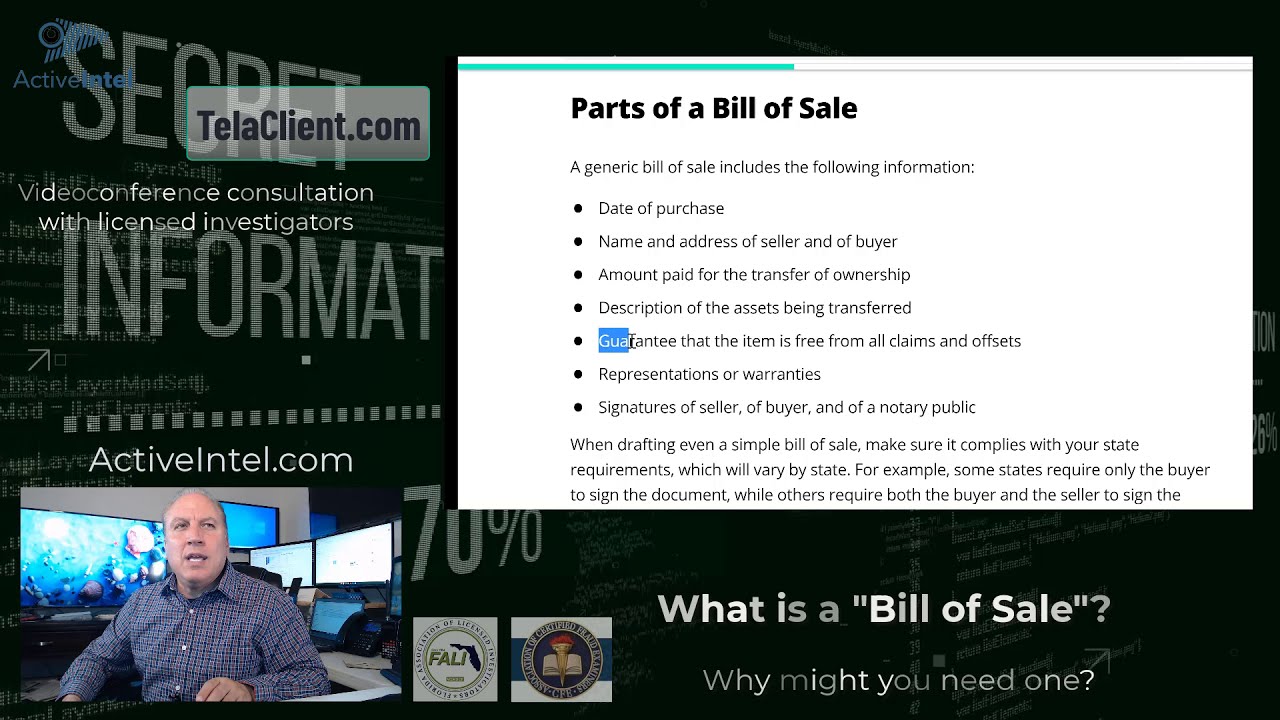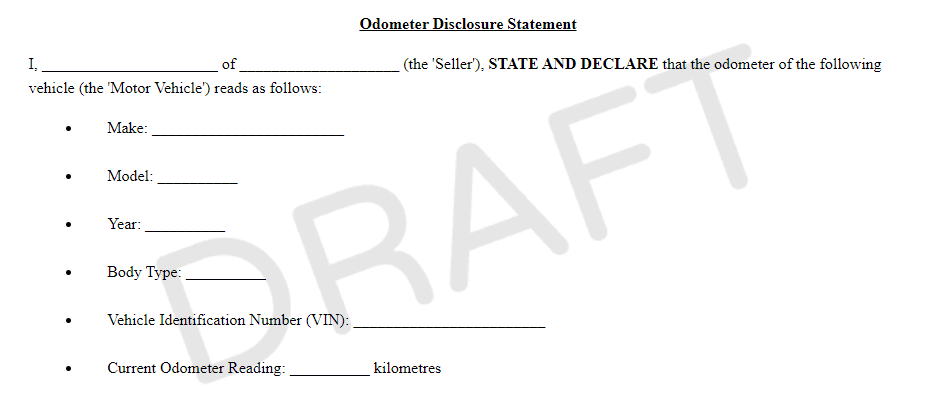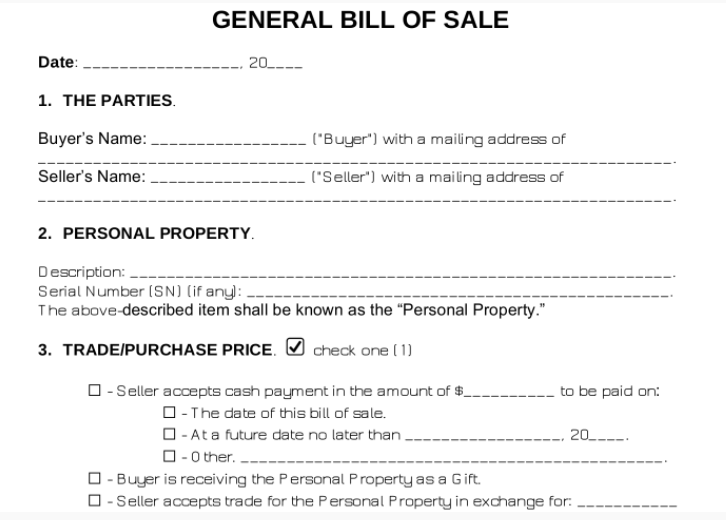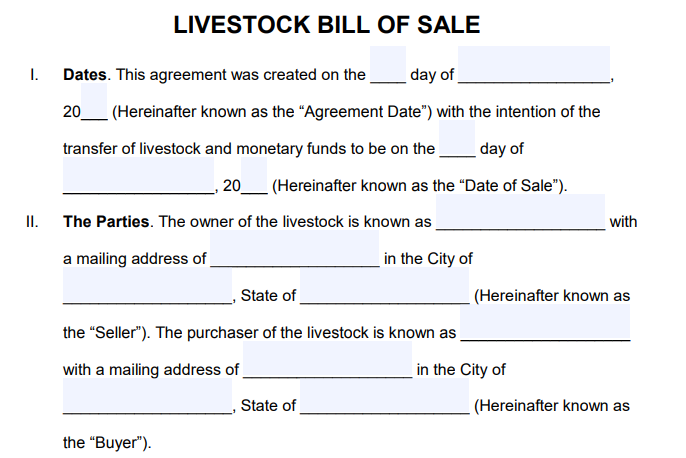Secure One’s Protection With The Right Bill Of Sale Template
Whether you’re a seller or a buyer, knowing how to make the right bill of sale templatecan protect you from certain liabilities as well as from getting scammed.
Don’t easily get swayed by sweet words. When engaging in a sales transaction, put everything down in writing.
Make and keep a record of the transaction, particularly if it involves thousands of dollars.
Having the right bill of sale template will ensure a smooth and, more importantly, a legal sales transaction.

What is a Bill of Sale?
What Is A Bill Of Sale?
A legal document, a bill of sale is a transaction record containing details of a transfer of ownership from a person who sold the goods or property to the person who bought it.
In addition, a bill of sale is specifically a sale document that describes, lists, and/or specifies what has been sold and purchased between two individuals or parties. It basically serves as a verification for two aspects of the transaction:
as a proof of payment
as a proof of purchase
According to ContractsCounsel, a company that helps people find and hire U.S.-based contracts lawyers, a bill of sale goes by several other names, such as: A bill of sale is often associated with transactions involving the sale and purchase of used or second-hand vehicles, such as:
Sales Slip
Sales Receipt
Proof of Sale
“As-Is” Bill of Sale
With that said, the use of a bill of sale, though, is not limited for sales transactions involving vehicles. It can also be used when selling personal properties, such as the following:
personal watercraft or PWC (e.g., the Jet Ski)
ship
boat
watercraft
trucks
automobiles
motorcycles
motor vehicles
Nevertheless, note that a bill of sale is generally used for goods or properties of significant value. In other words, those that are worth a huge amount of money, something that commands a four-figure price tag or even higher.
LegalZoom, a California-based legal services company, said that a bill of sale could just be an option when selling something of less value, such as apparel. For example, a 25-dollar lamp, a 1-year-old manual lawn mower for $40, and a one-time used prom dress for $63 are being sold. It’s up to the respective sellers to use a bill of sale for such a small transaction.
Of course, a pre-owned Birkin bag by Hermès or an Armani evening gown and similar high fashion clothing will make a seller draft a bill of sale. The buyer will probably even demand for one.
For real estate properties, a bill of sale is not used, according to ContractsCounsel. Transactions involving real estate tend to be more complicated as the local government requires more documents for such transactions.
Legal services website LegalMatch identified the following states, as of December 2020, as those that require a bill of sale to be notarized:
West Virginia
New Hampshire
Nebraska
Montana
Maryland
Louisiana
When drafting a bill of sale template, the seller will base it on the kind of item or goods involved in the transaction, and one will learn more about this later.
Is A Bill Of Sale A Receipt?
The Legal Information Institute (LII) of the Cornell Law School of Cornell University affirmed that a bill of sale and a receipt share a similarity.
Both a bill of sale and a receipt record a sales transaction. LII, however, noted that the former is regarded as a more formal type of document or written instrument than the latter.
In a nutshell, LII pointed out that a bill of sale can function as a receipt, but a receipt cannot serve as a bill of sale.
In a bill of sale, aside from the ones mentioned above, it may also include the manufacturing date, warranty details, specific features, and other information.
For example, in a receipt, when a laptop was bought, the receipt will show only the brand, model, and quantity of the laptop.
For one, a bill of sale includes a more detailed description of the item or goods sold.
Is A Bill Of Sale Same As An Invoice?
For being a legal document for a sales transaction, it could be said that a bill of sale is the same as an invoice. Still, they are entirely different in many aspects.
LegalNature, an online source of legal documents, differentiated a bill of sale from an invoice in the following ways:
A bill of sale normally involves cash payments only. An invoice allows credit card payment.
A bill of sale requires the buyer to pay in full and as soon as the goods or property has been given/received. An invoice says that a buyer can pay at a later date even when the buyer already received the goods.
A seller gives a bill of sale at the date the goods or property has been given or delivered. An invoice can be issued in advance.
A bill of sale is a signed document (either by the seller or the buyer or by both). An invoice often doesn’t require a signature.
A bill of sale includes information not found in an invoice as well as other information that an invoice doesn’t have.
It becomes legally binding if it complied with all the regulations required by the state where the sales transaction occurred, said automotive research website CarsDirect.
A bill of sale is legally binding; an invoice, not.
In addition, a bill of sale is not used for services rendered. That explains why there’s no bill of sale template available for provided services. Service businesses use invoices.
What Is The Reason For A Bill Of Sale?
When two parties – a buyer and a seller – engaged in a financial transaction where an exchange of goods took place, there should be proof of it. That is when a bill of sale enters the picture.
The reason for a bill of sale is that it simply provides evidence of a proof of purchase and that a sales transaction was carried out legally.
Another reason is that, in the U.S., for example, a bill of sale is necessary when selling or buying a vehicle. There, the Department of Motor Vehicles (DMV) of certain states actually require it. One main reason is for the DMV to accurately document and properly monitor vehicle sales, according to I Drive Safely, an online provider of driver training courses.
Some of these states, as named by CarsDirect in an online article it published in January 2012, are the following:
Wyoming
West Virginia
Washington
Vermont
South Dakota
Rhode Island
Ohio
New York
Nebraska
Maine
Idaho
Hawaii
Connecticut
Colorado
Arkansas
Alabama
Though not in the aforementioned list, the DMV of the State of California, according to its official website, also requires a bill of sale, particularly under this circumstance:
the person whose name is indicated in the said title
the seller (to whom the car was bought from)
The name written in the title of a car, for example, is not the name of the person who sold the car. In such a situation, the buyer (now the new car owner) must present a bill of sale with two signatories:
Now what if a car was sold and bought in private in a state that doesn’t ask for a bill of sale? Well, on the part of the seller, the prudent thing to do is to always take the side of precaution. Therefore, the seller should still provide a bill of sale, as advised by CarsDirect, to have a record of the sales transaction for future reference. The seller will have, in his/her safekeeping, a document containing the following information:
odometer mileage/reading at the time the selling-buying happened
price of the car/total amount of money paid by the buyer
date when the car was sold
These details in a bill of sale play a crucial part when disputes happen as initiated by the buyer.
Furthermore, a bill of sale, according to the Legal Information Institute, can be used by a person as proof of one’s ownership rights.
Finally, for sellers, ContractsCounsel recommends that they talk to a lawyer to know if they should draft a bill of sale for a certain transaction. An attorney can also tell what the seller should put in a bill of sale template for a particular transaction.
Does A Bill Of Sale Prove Ownership?
When it comes to the purchase of a vehicle, a bill of sale doesn’t prove ownership, but it serves as proof of transfer of ownership.
LegalZoom said that a bill of sale is needed when applying for a vehicle title transfer.
The process could be broken down into the following:
Once the DMV receives the bill of sale, it can now start the paperwork to process the vehicle title transfer.
DMV asks the buyer for a copy of a bill of sale, again, as proof that the buyer indeed bought it from someone else.
The buyer goes to a DMV office to register his/her name as the new owner of the car.
The seller gives the buyer a bill of sale as proof of the sales transaction of the said car.
Another person buys it.
A person sells a car.
So, when it comes to purchasing a vehicle, it’s the title transfer that will prove someone to be the owner of that vehicle, not the bill of sale. A bill of sale only acts as a supporting document when processing title transfer.
In case of other items or goods sold, for example, an antique furniture or a piece of jewelry, a bill of sale will prove ownership. Why? It’s because a bill of sale, as discussed earlier, serves as proof of:
payment
purchase
a sales transaction
Once a buyer receives a bill of sale for something he/she bought, it makes the buyer the new owner of that item or goods. Such, as explained in this section, doesn’t apply for purchased vehicles.
How Does A Bill Of Sale Work?
Regarding how a bill of sale works, according to investment website Investopedia, it could either be a simple or a complex process.
It all depends on the monetary value of the item or goods involved in a sales transaction.
If the transaction concerns some items of less value such as a couple of appliances or a box of bottled fruit preserves, it could be fairly simple.
If, however, it will be a transaction for a vehicle such as a van or a speedboat, then it could become a bit complex. Why and how? The bill of sale that will be made will include more information. The seller must also ensure that such information includes those required by a state’s DMV.
The bill of sale template that will be used will also either be a relatively simple one or one that must include a lot of information.
Is A Bill Of Sale Important?
In several ways a bill of sale is important because, as previously stated, it primarily supports the legality of a transaction.
It formally and legally backs up a claim to a purchase or a sales transaction as well as to one’s ownership of goods or property.
As a legal document, both parties – the seller and the buyer – can use a bill of sale as evidence in court in case a legal dispute arises. Any accusation made by the buyer or any allegation from the seller can be proven true or wrong based on the information indicated in a bill of sale.
Remember, a bill of sale contains verifiable information. Each entry in a bill of sale template should be correct and not misrepresented.
Does A Bill Of Sale Protect The Seller?
A bill of sale can protect the seller from paying a penalty, giving a refund, or, worse, from getting jailed. It could happen when the buyer claims something untrue or incorrect, such as a piece of information not included or mentioned in a bill of sale.
Consider these two scenarios as examples:
First scenario
Given that the buyer bought the car on an “as-is” basis, he/she cannot require the seller to pay for the repairs. That is why it is important for the seller to include all pertinent information when making a bill of sale template to protect him/herself.
An “as-is” basis, explains USLegal, is when a seller sells something without giving any warranty to the buyer, whether verbally or in written form. The seller uses it for his/her own protection.
Legal services website USLegal defines “as-is” as “a term used in warranty law to disclaim the seller’s liability for faults in the item sold.”
However, the seller clearly stated in the bill of sale that the car was sold on an “as-is” basis. Meaning, at the time the seller sold the car, he/she didn’t guarantee that it’s in excellent condition. If the car experiences any kind of problem after it was sold/purchased, the seller will not hold any responsibility for it. The seller shall not be held liable, for example, for any repair work.
The buyer protested that the car he/she purchased from a seller encountered a problem barely 48 hours after the purchase was made. The buyer said that the last time he/she checked, the left window at the backseat couldn’t be rolled down anymore.
Second scenario
It could then be possible that the two cows only got sick while under the care of the buyer. Perhaps they ate something bad or caught a disease while in the buyer’s farm, or whatever place the buyer is keeping them.
However, the seller indicated in the livestock bill of sale that all three cows were in good health at the time they were sold. A licensed veterinarian attested such a claim, and the vet signed the seller’s livestock bill of sale.
The buyer complained that two of the cows he/she bought got sick a week after the purchase.
Does A Bill Of Sale Protect The Buyer?
A bill of sale can protect the buyer when the seller makes any fraudulent act or misrepresentation with regard to the goods or property being sold, according to USLegal.
When that happens, LegalZoom said that the bill of sale given by the seller will not anymore be legally valid; thus, making it null and void.
The buyer may take the matters into court or just quietly settle it out of court, especially if the seller is willing to cooperate.
If ever the seller denies that he/she sold something to the buyer, the buyer can easily show a bill of sale as proof, added I Drive Safely.
Note: In the case of purchasing, for example, a car on an “as-is” basis, USLegal recommends buyers to bring with them a good auto mechanic. The hired mechanic can inspect the car before the buyer makes a purchase. That way, despite an “as-is” bill of sale, the buyer will be more aware of the risks involved in the purchase.
Who Keeps The Bill Of Sale?
The buyer is normally the one who keeps the bill of sale, and in a sales transaction involving a vehicle, the DMV also gets to keep a copy.
The seller is the one who drafts a bill of sale, which is then given to the buyer while the transaction happens.
A buyer will definitely ask for it, especially when buying a vehicle. A seller may opt not to keep a copy for him/herself.
After reading how a bill of sale can protect the seller, it will be best, therefore, for the seller to make a copy for his/her own record/reference.
Types Of A Bill Of Sale
The Legal Information Institute (LII) identifies two main types of a bill of sale, namely:
If the debtor ultimately fails to settle the debt, the creditor will now have the right to have the debtor’s car.
It means the debtor is allowing the creditor to use the car while the debt is still unpaid, but the debtor still keeps the title.
As a form of security, the debtor gives a conditional bill of sale to the creditor for the debtor’s car.
For example, a debtor borrows money from a creditor.
This is used for transactions involving financing and borrowing.
Conditional bill of sale
LII said it’s the “ideal” one to use when selling something on an “as-is” basis.
This is used when selling items or goods.
Absolute bill of sale
The other two types of a bill of sale, as identified by LegalMatch, are:
he/she decided not to give a warranty of title
he/she cannot guarantee to the buyer that he/she is the true owner of the item or goods being sold
This is used by the seller if:
Quitclaim Bill of Sale
he/she legally obtained the right to transfer ownership of such item or goods
he/she is the true owner of the item or goods
This is used by the seller if he/she can guarantee to the buyer that:
Bill of Sale with Warranty
How Do I Write A Bill Of Sale Template?
To be properly guided when making the right bill of sale template, the seller, the one in charge of doing it, should identify first what is being sold.
Step 1:For U.S. residents, identify the state where the transaction will be made.
Know the guidelines or requirements concerning a bill of sale; then incorporate them in the bill of sale template you’re drafting.
Step 2:Schedule the transaction.
The date that will appear in the copy of a bill of sale should be the date when the transaction will take place.
Step 3:Identify what item or goods will be sold.
Is it livestock?
Is it a vehicle?
Is it a personal item, such as a pair of earrings?
Step 4:Describe the item/goods in detail and gather all the required information about it.
Step 5:Know the contact details of the buyer.
Step 6:Write down your own (as the seller) contact details.
Step 7:Give details of the transaction.
For example, is the amount you’re asking includes sales tax (if applicable)?
Step 8:Give other pertinent details.
Will you be selling on an “as-is” basis?
Will you be giving a warranty?
Step 9:Start making the bill of sale template and as a checklist, consult the information listed below.
The format or appearance always varies, but every bill of sale template must include the following information:
the dates when the signatures were made
the signature of the seller and buyer (sometimes over printed name)
details regarding warranties or other representations the seller wants the buyer to know
detailed description of the item or goods being sold
the exact amount of money paid
landline and/or mobile number
complete home address
buyer’s contact information
buyer’s complete name
landline and/or mobile number
complete home address
seller’s contact information
seller’s complete name
month, day, and year
date of the transaction/purchase
Each sample of the bill of sale template below corresponds to a particular goods or property.

How do you write up a bill of sale?
General Bill Of Sale Template
This bill of sale is also called:
Standard Bill of Sale
Personal Property Bill of Sale
Generic Bill of Sale
The general bill of sale template is typically used when selling personal properties, such as:
pets
clothes
books
It includes the following information:
date when the signature was made
signatures of the seller and buyer
the full amount of money paid by the buyer
notes or comments from the seller
a description of the item/goods
contact information of the seller and buyer
name of the seller and buyer
date when the transaction took place
See this generic sample of a bill of sale template by Movavi Software, Ltd.:
Below is a blank “As-Is” Bill of Sale template by Billofsale-form.com:
See this another sample of a General Bill of Sale template, and this time, with additional information, by Electronic Forms LLC:
First half:
Second half:
Vehicle Bill Of Sale Template
When drafting a bill of sale template for a vehicle, the seller must consider the existing guidelines of the DMV of the state where the transaction will be held.
Note: Some states require the license plate number to be included in a vehicle bill of sale.
Below is the vehicle bill of sale template of the DMV of New York State:
First half:

Second half:

Below is a sample by LawDepot of a motor vehicle bill of sale template used in Australia:
First half:
Second half (showing warranties, notes, comments, representations by the seller):

Third half (where the seller signs to enforce/validate the warranties and other conditions he/she stated in the motor vehicle bill of sale):

Fourth half (a motor vehicle bill of sale template may include an Odometer Disclosure Agreement):

Finally, the bottom part of this sample motor vehicle bill of sale template used in Australia:

Livestock Bill Of Sale Template
For a bill of sale template for farm animals or livestock, Electronic Forms LLC recommends that the following information be included:
Below is a sample livestock bill of sale template by Electronic Forms LLC:
First half:
Second half (showing the description of the livestock):
Last part:

If in the near future you find yourself either selling something of large value or buying one from someone, it will help if you know something about a bill of sale.
Being familiar with the right bill of sale template can help a seller and a buyer to secure protection from misrepresentations or fraud.







